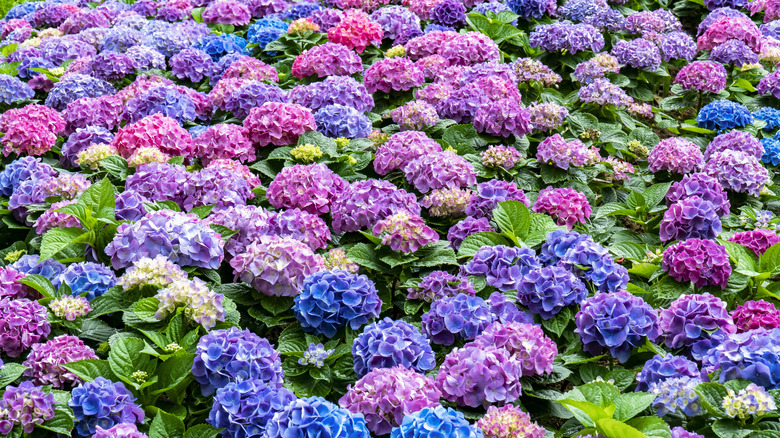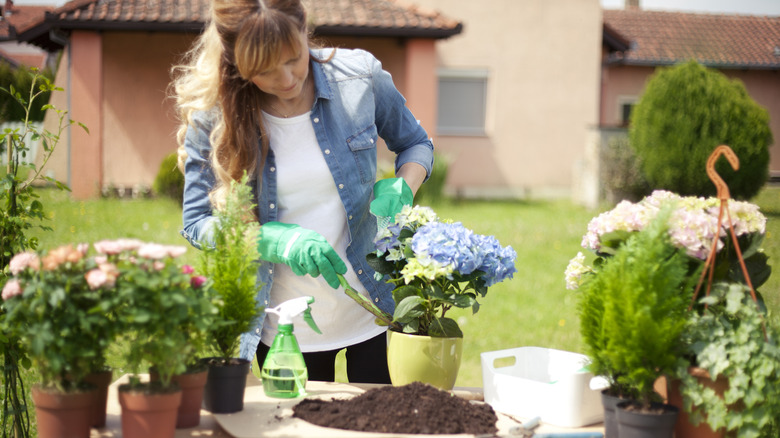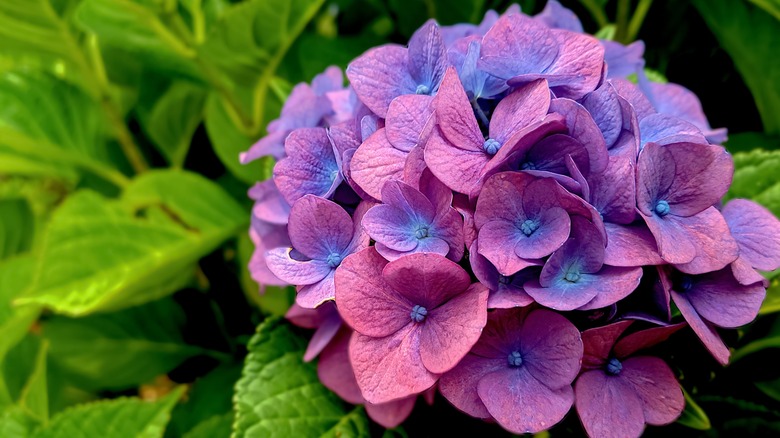What The Color Of Your Hydrangea Means
Hydrangeas are like the chameleons of the plant world. Yes, a single shrub can change from one beautiful, vibrant color to another. Yet, the reason for that change, and thus the very meaning behind each hydrangea color, is more involved than most casual observers might imagine.
The most basic answer given for why these shrubs can go from a rich, almost red-like pink to a blue hue that mirrors the best parts of the ocean is soil acidity. A hydrangea that sits in acidic soil is capable of turning blue, while one that's planted in alkaline soil is capable of turning pink. A quick recall of the color wheel tells us purple is a combination of the two, and, yes, such a color can be the result of neutral soil or one that's transitioning from acidic to alkaline. It can also be due to simple genetics.
Really, though, soil pH is only one-half of the puzzle. Hydrangeas need aluminum, too, to pull off their color change act. To put it in the simplest of terms, aluminum particles move freely in acidic soil, allowing those particles to attach themselves to a hydrangea's root and turn it blue. A soil that's alkaline is much more hesitant to give up its aluminum, making it more difficult for the shrub's root to take hold. While most soils do in fact contain aluminum, it's possible its presence is lacking if your blue species is not producing the deep color you desire.
How type and temperature affect a hydrangea's color
The keyword taken from that entire explanation is "capable." You could try every soil trick on the internet to influence the color of your hydrangea, and it still would not change a thing. White varieties, for example, will always be inherently white. Certain pink, purple, and blue species will stay their respective colors too, or, at the very least, they won't show a drastic change in hues.
Temperature is really the only factor that can influence a species that isn't designated as color change capable. Hydrangeas grow best in USDA hardiness zones 3 through 9. Temperatures that are hotter than that are like a drain switch. It'll keep the shrubs from reaching their bright potential, and they'll instead remain on the paler side. As fall makes its way to winter, the usual steadfast white hydrangea can show a bit of pink, and many other color varieties could begin turning green.
Hydrangea species that are best at changing color
Turning a blue hydrangea pink or a pink one blue is certainly a fun task to undertake. It can be challenging, of course, but you can give yourself a leg up by choosing a variety that is most open to switching its color. Bigleaf hydrangeas, known professionally as Hydrangea macrophylla, are the most common variety by far for hues of blue, pink, and purple. As with any flower family, there are a dozen or more varieties within that species. Your best bet is to have a chat with your local nursery on which varieties will most closely reach your desired effect. Mountain hydrangeas, or Hydrangea serrata, are the next best option for your color-changing experiments.
Whatever variety you choose, it's best to go into your planting with a bit of patience. Subtle differences may happen quickly, but it typically takes one or two growing seasons to truly change a hydrangea's color. Start with the color you want, and then begin your experiments from there.


